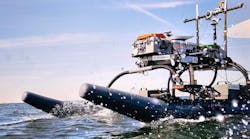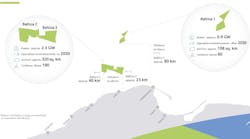HOUSTON, Apr. 30 -- The effects of sound from seismic airguns on marine mammals is becoming a greater issue worldwide.
Knowledge levels are low, and research into the sound issue often generates conflicting conclusions, said Jack Caldwell, vice-president of Integrated Geoscience, Core Laboratories Inc., Houston.
He spoke at an Offshore Technology Conference luncheon Monday.
Caldwell said operators and geophysical contractors seeking permits for seismic surveys have begun to encounter regulatory agency concerns about how they will mitigate sound levels that might be considered excessive (OGJ, Sept. 13, 1999, p. 105).
He said funding of $2 million/year by the oil industry would increase the knowledge base more quickly.
He said environmentalists are concerned that sound from airguns and sonar from government and private vessels is harming, or changes the behavior of, marine mammals.
Current options to mitigate the effects are seasonal or geographic restrictions on marine seismic acquisitions, slow start procedures, monitoring of mammals for information purposes, and maintaining safety zones of 500-2,500 ft.
Caldwell said explosives are used in a few transition zone applications, but are no longer used in marine seismic acquisition in any meaningful way.
The US Minerals Management Service has little scientific data relating to disturbance of such wildlife that it could use to objectively evaluate permits for seismic surveys and other industry-generated sound.
More data likely will become available in the next few years as the result of several regulatory proceedings and governmental, academic, and industry research efforts.
If evidence mounts that man-made sound levels harm marine life, geophysical contractors and oilfield operators could face delays, higher costs, and perhaps even greater restrictions on marine seismic acquisition operations.
Marine mammals of concern include whales, dolphins, porpoises, and seals. Sea turtles are also potentially vulnerable.




